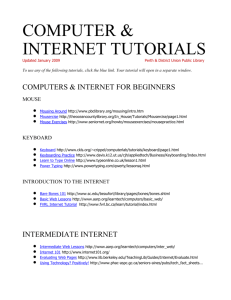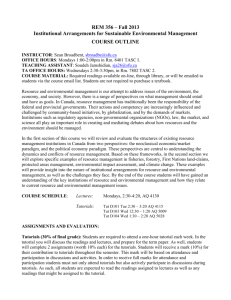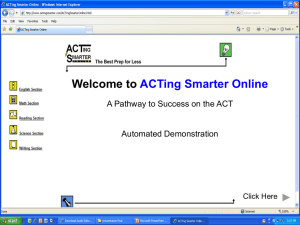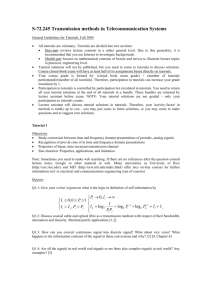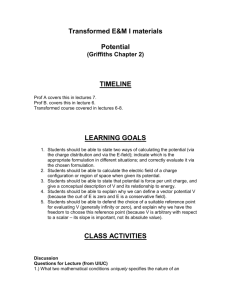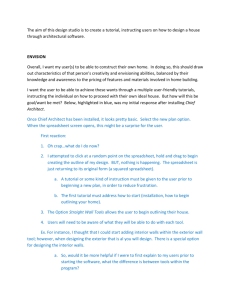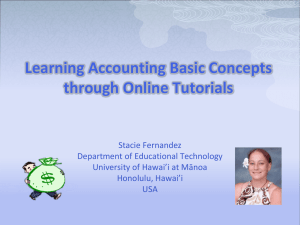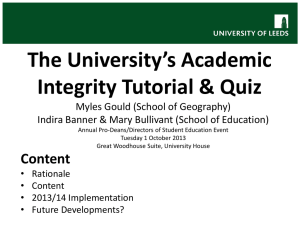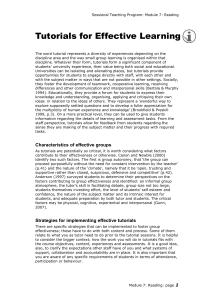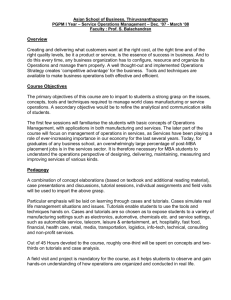Interactive tutorial - teacher notes1
advertisement
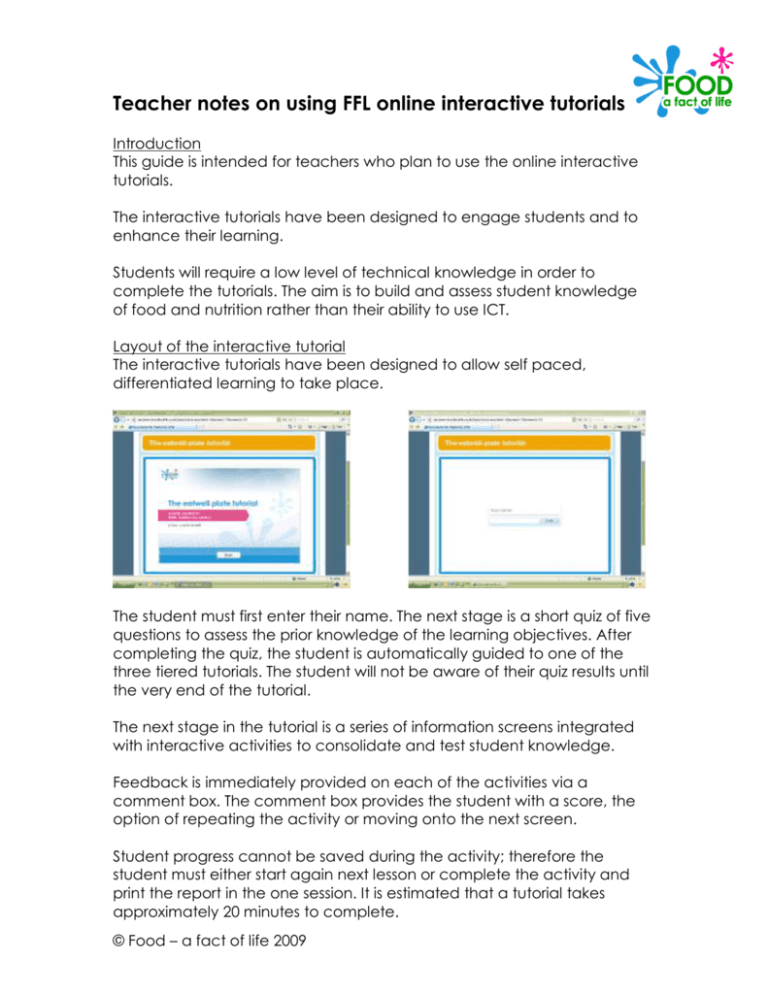
Teacher notes on using FFL online interactive tutorials Introduction This guide is intended for teachers who plan to use the online interactive tutorials. The interactive tutorials have been designed to engage students and to enhance their learning. Students will require a low level of technical knowledge in order to complete the tutorials. The aim is to build and assess student knowledge of food and nutrition rather than their ability to use ICT. Layout of the interactive tutorial The interactive tutorials have been designed to allow self paced, differentiated learning to take place. The student must first enter their name. The next stage is a short quiz of five questions to assess the prior knowledge of the learning objectives. After completing the quiz, the student is automatically guided to one of the three tiered tutorials. The student will not be aware of their quiz results until the very end of the tutorial. The next stage in the tutorial is a series of information screens integrated with interactive activities to consolidate and test student knowledge. Feedback is immediately provided on each of the activities via a comment box. The comment box provides the student with a score, the option of repeating the activity or moving onto the next screen. Student progress cannot be saved during the activity; therefore the student must either start again next lesson or complete the activity and print the report in the one session. It is estimated that a tutorial takes approximately 20 minutes to complete. © Food – a fact of life 2009 The final report cannot be saved, but can be viewed online or printed. By entering the student’s name at the beginning of the tutorial, each report printed will be personalised. The results of the quiz, the number of interactive activity attempts and the score for each activity will be provided. Further descriptions of the interactive activities found within the tutorials are found below. Menu page The menu page allows the student to choose which area he or she will investigate. This allows the student to select their own route through the tutorial. In order to complete the tutorial, the student must click on the final quiz section after each area has been investigated. Drag and drop The student will need to identify and match one set of items with another into pairs. Items can be laid out in rows or can be positioned around an image. Sometimes decoy options, are provided where the picture or word is an incorrect answer. © Food – a fact of life 2009 Fill in the gap The student will be required to read a piece of text. Within the text there will be gaps in a word, sentence or paragraph, for the student to click on. Once the student clicks on the gap, there will be either a predetermined bank of words from which to select, or an area to type the missing word/s. Ordering The student will be presented with a series of either pictures or words out of sequence. The student will need to click and drag each picture/word into the correct order. Linking lines Two sets of items will be presented to the student. The first set must be linked with an item from the second set using a connecting line. Items will have images or text and can be laid out in simple rows or around an image. © Food – a fact of life 2009 Question The question page requires the student to complete a multiple choice question. There can sometimes be more than one correct answer. The student must identify the correct number of answers before clicking the ‘Next’ button. Feedback Immediate feedback is provided after each interactive activity via a comment box, which provides a score and the option to try the activity again. The final report provides a summary of how many attempts were made on each activity. Remember, the final report cannot be saved. It must be © Food – a fact of life 2009 printed, otherwise the information will be lost. It is important the student enters their name to ensure each report is identifiable. The student’s names or data is only recorded for the final report. Once the student exits the tutorial, all the data will be lost. How to use the interactive tutorials There are many different ways to make use of this resource. The teacher may choose to: integrate the tutorials into the scheme of work in classroom lesson; use these on an ad-hoc basis for revision; use the tutorials for relief or cover lessons; assign the tutorials for homework, where the student brings the printed final report in from home; support students who miss lessons or class time. All tutorial content is in pilot format. If you have any comments, please send these to Georgine Leung on g.leung@nutrition.org.uk. © Food – a fact of life 2009
